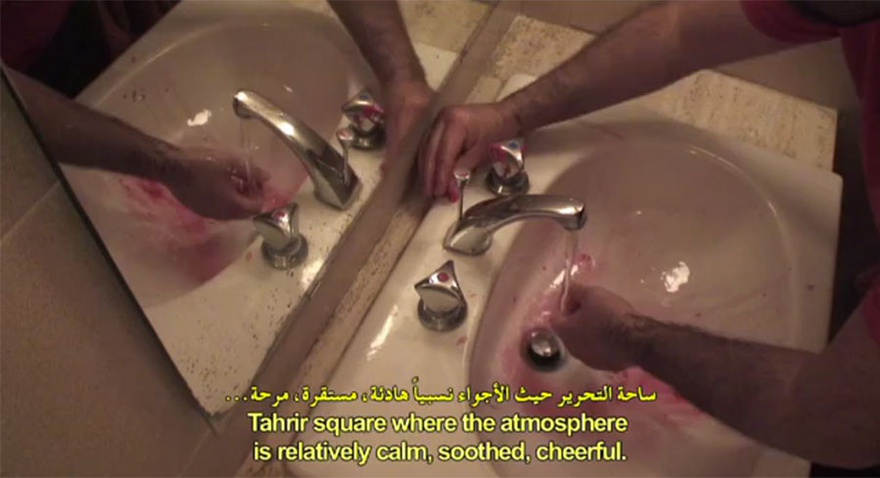News
Virtual Agoras at the 7th Berlin Biennale
The video programme Virtual Agoras, presented at the KW Institute for Contemporary Art as part of the Berlin Biennale, is the result of ongoing research into creative and artistic online activism related to the uprising in Syria.
Following the closure of the country to foreign journalists, and the restrictions in place even before that, ordinary Syrians have taken it upon themselves to document, inform and comment on unfolding events, in the process developing what might be termed an 'informal news channel', by uploading their videos onto platforms such as YouTube and Facebook. Besides videos documenting the protests and escalating violence, a great number of creative videos have been made and distributed online that comment on events and their representation in official Syrian media, as well as the helplessness of the international community.
Activist videos by professional artists began appearing some months into the conflict between protestors and police, which began in March last year. In a language that is direct, and devoid of the carefully constructed metaphoric visual landscapes characteristic of socially critical art and cinema from Syria in the past, these works stand out as powerful statements against oppression and violence. But this outspokenness comes at a price. Artists inside Syria need to work anonymously. As long as the conflict continues and the regime clings to power, the dangers of openly raising one's voice are still very real. The case of caricaturist Ali Ferzat, who was brutally beaten last summer, remains a powerful example and a warning.
The programme Virtual Agoras at the 7th Berlin Biennale presented a number of works addressing events in Syria in unexpected and lyrical ways. Ammar Al-Beik's The Sun's Incubator (2011) interweaves autobiography and current events to create a parable of life and hope, tragedy and despair, change and brutal setback. Smuggling 23 Minutes of Revolution (2011), by an anonymous Syrian still living in the country, is a portrait of the city of Hama, the protests taking place there and the hopes for change of its people; Mohamad Omran and Dani Abo Louh's Conte de printemps (2011), meanwhile, uses a combination of drawn paper figures and found footage to comment on the hopes of the wider Syrian protesters and the ways in which they have been brutally repressed. Khaled Abdelwahed's short animation Bullet (2011) insists on the power of hope, even in the face of brutality; Philip Horani (pseudonym) offers LIBERTé (2011), the story of the Syrian uprising told via a videotaped painting performance, and Eyas Al-Mokdad's Bloodshed (2012) is a journey through a nightmarish atmosphere laced with persecution and anxiety. Finally, Lebanese artist Salah Saouli uses ancient magical amulets to express his solidarity for the Syrian people in his work Amulet for Syria (2012).
Philip Horani, LIBERTé, 2011. Courtesy of the artist.
These videos and films are characterised by a search for new means of expression and alternative imagery. Found footage was not very widely used by artists in Syria before the uprising, but is now an important feature of many videos. Animation and digitally distorted images are other techniques that are currently being deployed. The need to act fast is not concealed, but rather allowed to guide the works, adding a particular dynamic, which we can see in the examples uploaded here on Ibraaz.

